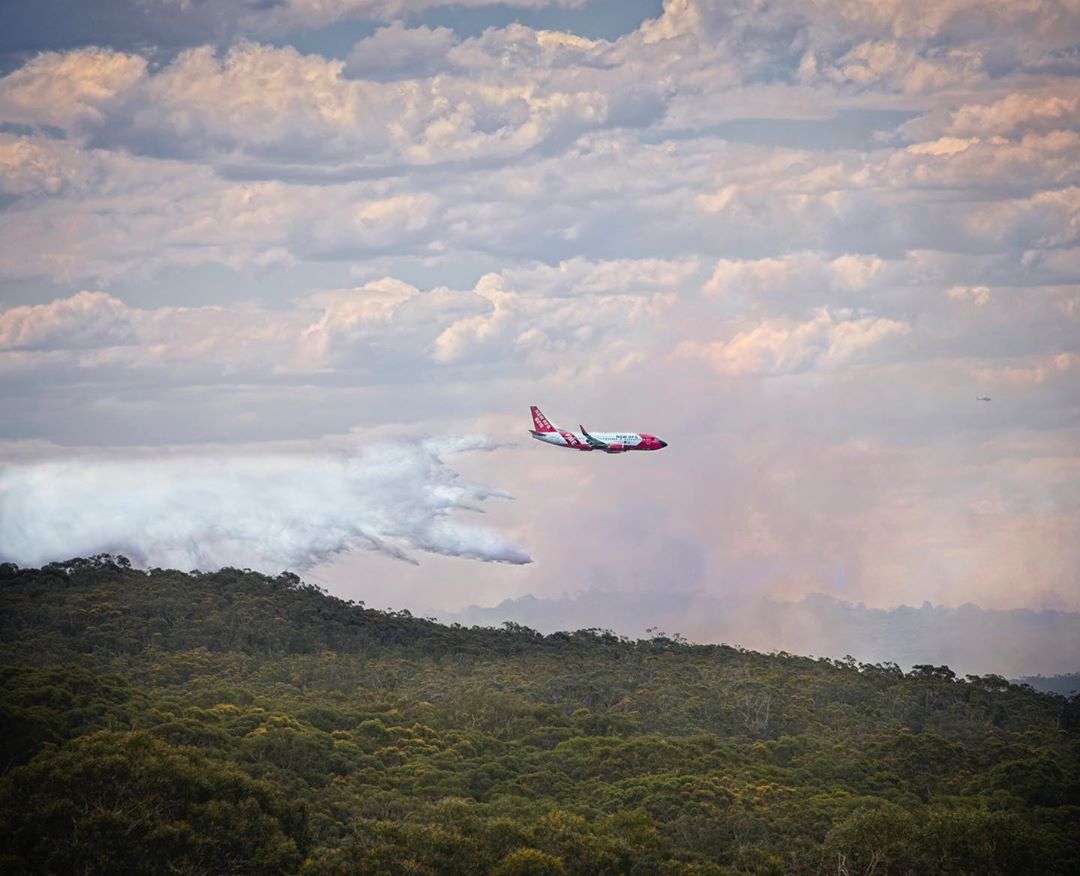Smoke returns to Sydney
For many Sydneysiders, rising temperatures and daylight savings are exciting signs that summer is on the way.
But while this may be a positive time of year for many in the harbour-side and beach-riddled city, the reappearance of smoky skies are something no one is keen to see.
Plumes of smoke have been popping up around Sydney during the past week from a mix of hazard reduction burns and out of control bushfires.
On Saturday, NSW Rural Fire Service (RFS) crews were called out to assist with a hazard reduction burn that had 'spotted' in the Royal National Park. Spotting occurs when wind blows burning embers from an active fireground to a new location, where they start another fire.
This new blaze quickly got out of control, forcing the RFS to call in the 737 Large Air Tanker 'Marie Nashir' - this was the plane's first operation of the season.

Image: Aircraft were waterbombing the fire in the NSW Royal National Park on the weekend. Source: @malibumedia
Smoke from the Royal National Park fire affected the Princess Highway near Waterfall and surrounding areas of Sydney's south on the weekend. On Monday, the fire was listed as under control on the RFS website.
A number of other hazard reduction burns have been occurring in central eastern NSW this month. While they play a necessary role in limiting the extent of future fires in the coming months, they may have a few people on edge given the enormity of last summer's fires.
Advice: Kangaroo Ridge, Princes Hwy Waterfall (Sutherland LGA). Sth'ly winds are forecast this evening until tomorrow, with smoke from this fire likely to affect areas to the north including Heathcote and Engadine. No current threat to properties. https://t.co/VIebKqZtTF #NSWRFS pic.twitter.com/XwjakqugFX
— NSW RFS (@NSWRFS) October 11, 2020
Last fire season was devastating for NSW. It scorched over 5 million hectares of land across the state, including just over 80 percent of the Greater Blue Mountains World Heritage Area.
These blazes also consumed about one quarter of the suitable koala habitat in eastern NSW and scorched land that's home to almost 300 threatened animal species.
Thankfully this week's fires in NSW are almost all planned and controlled. Looking more broadly, this bushfire season is also expected to be less severe than last season, simply because the bush isn't as dry and we are expecting to see more rain.
However, fires will still happen. So be sure to keep an eye on the latest fire information throughout this season, particularly if you see smoke.